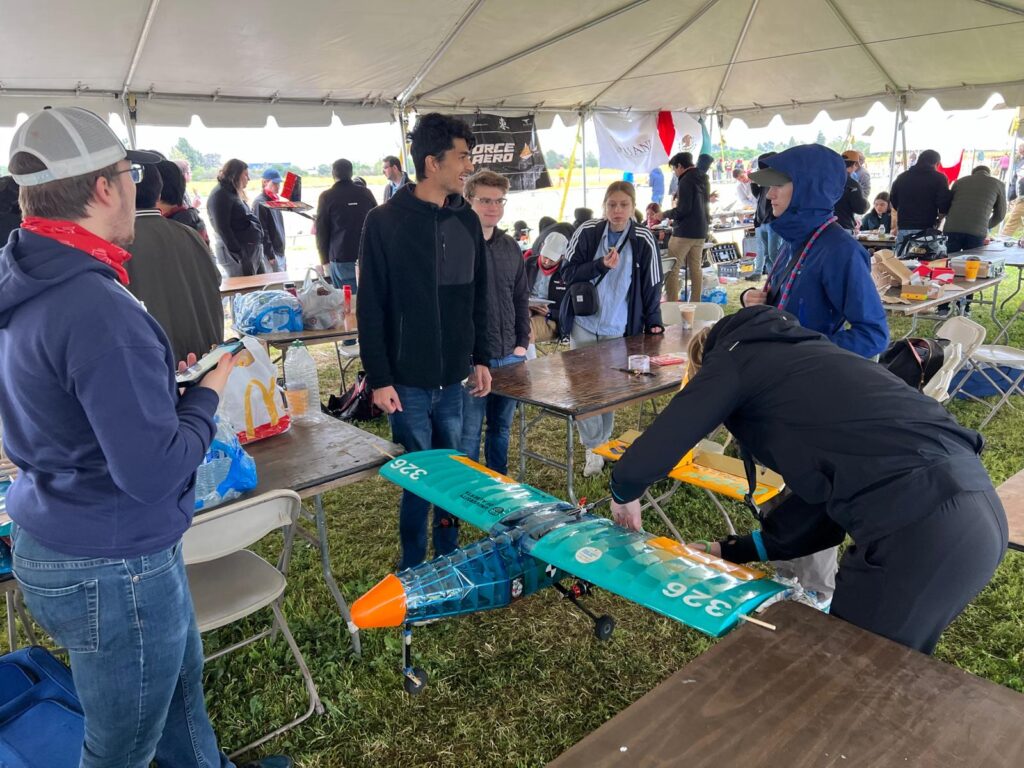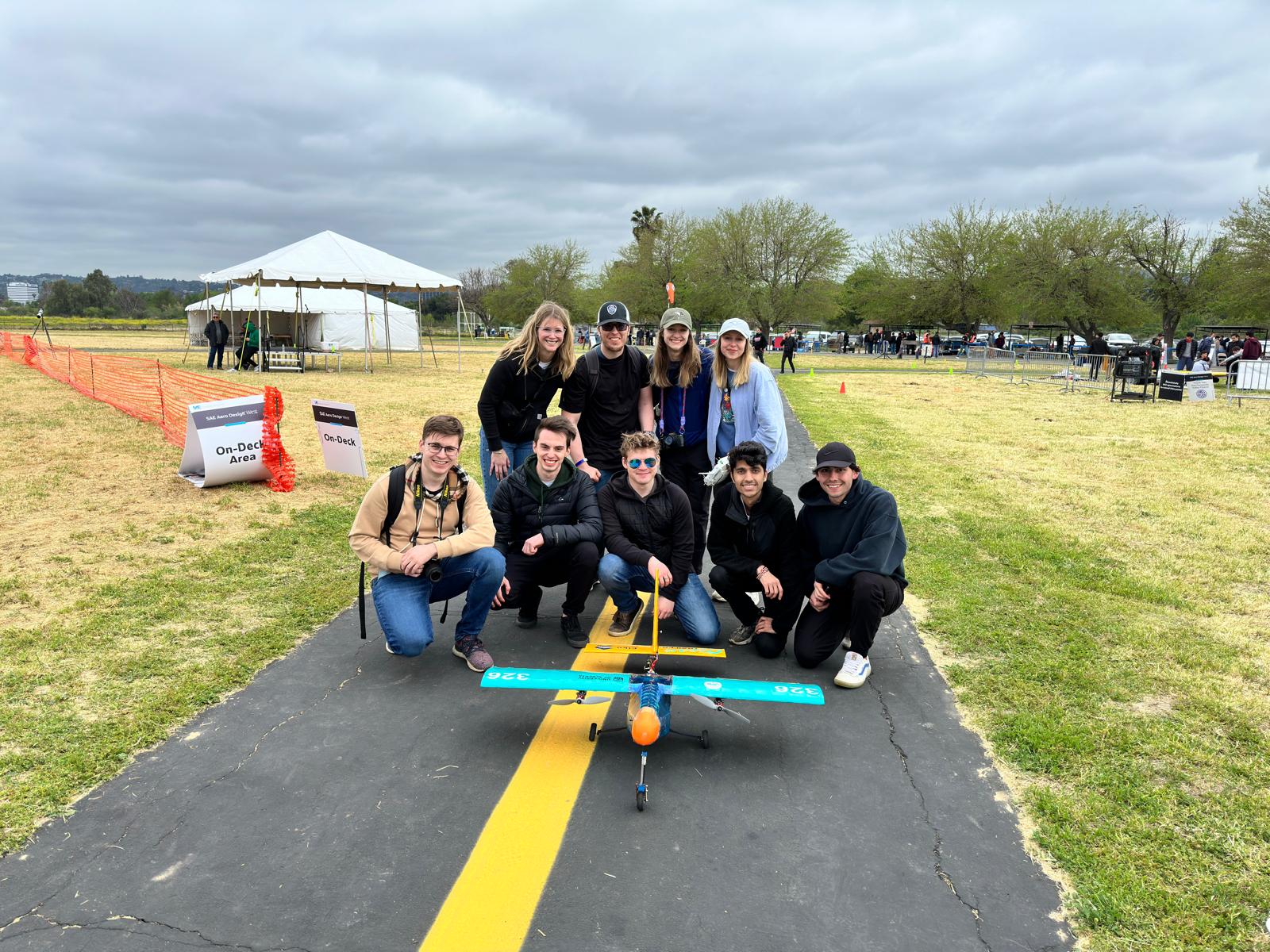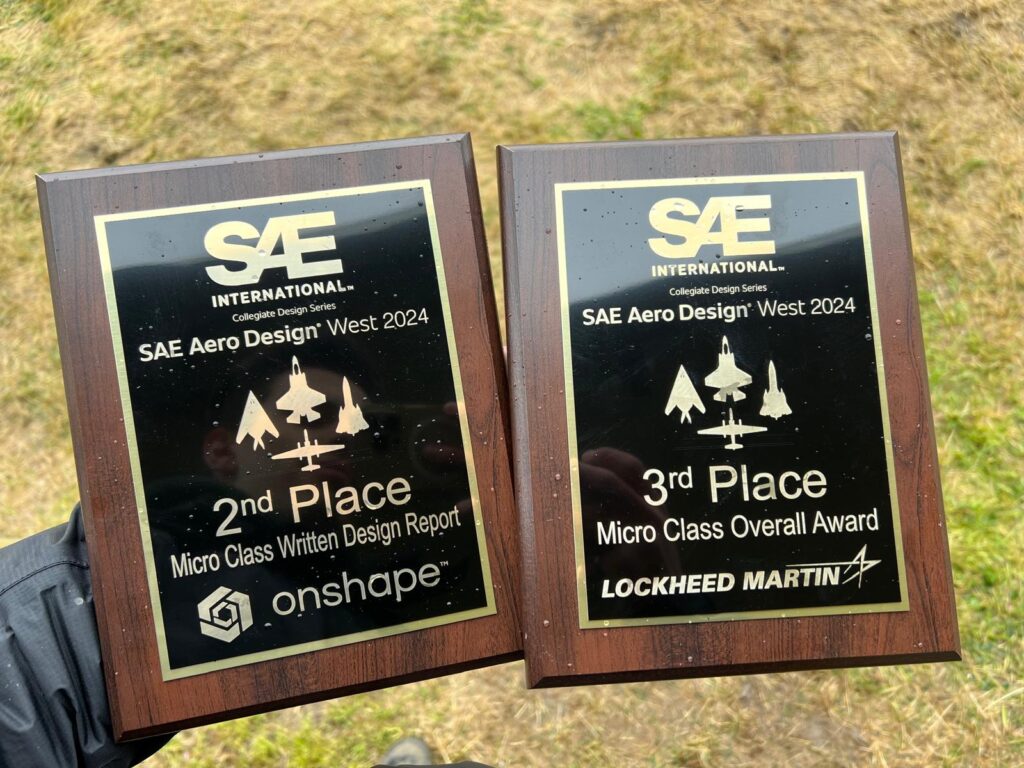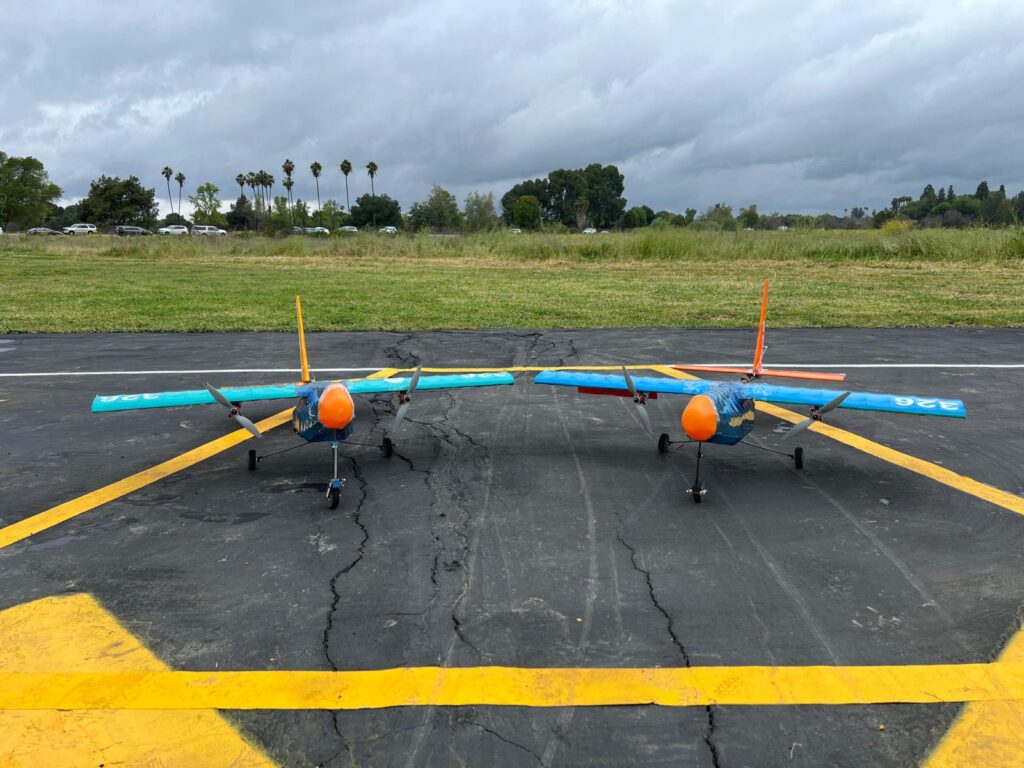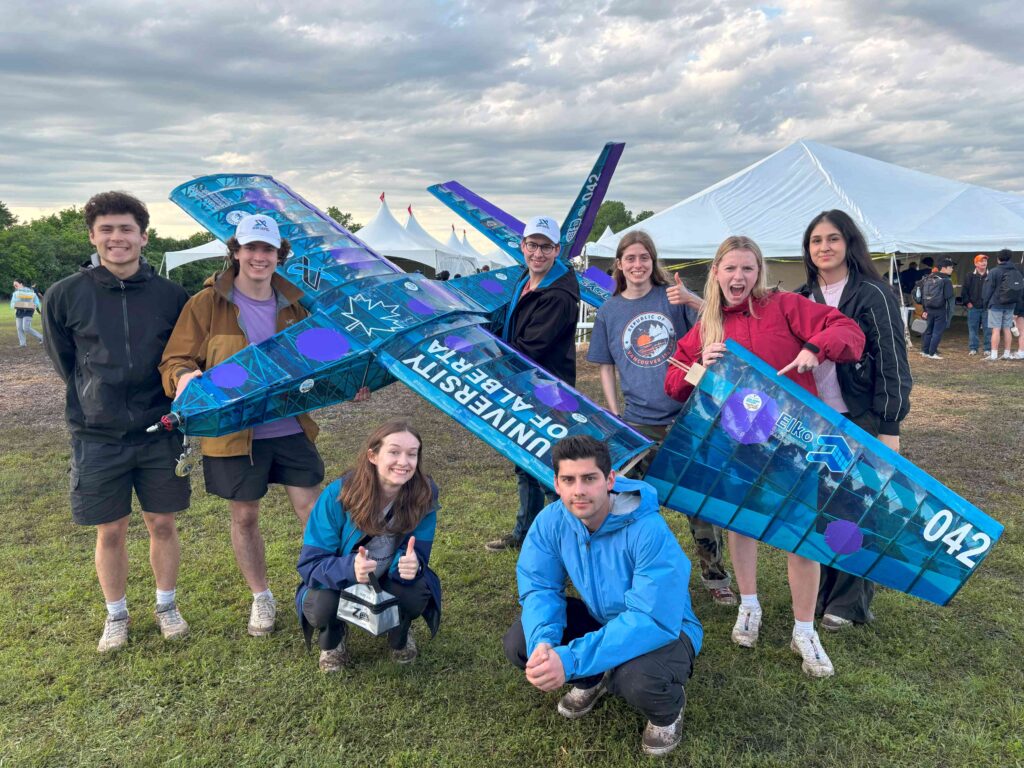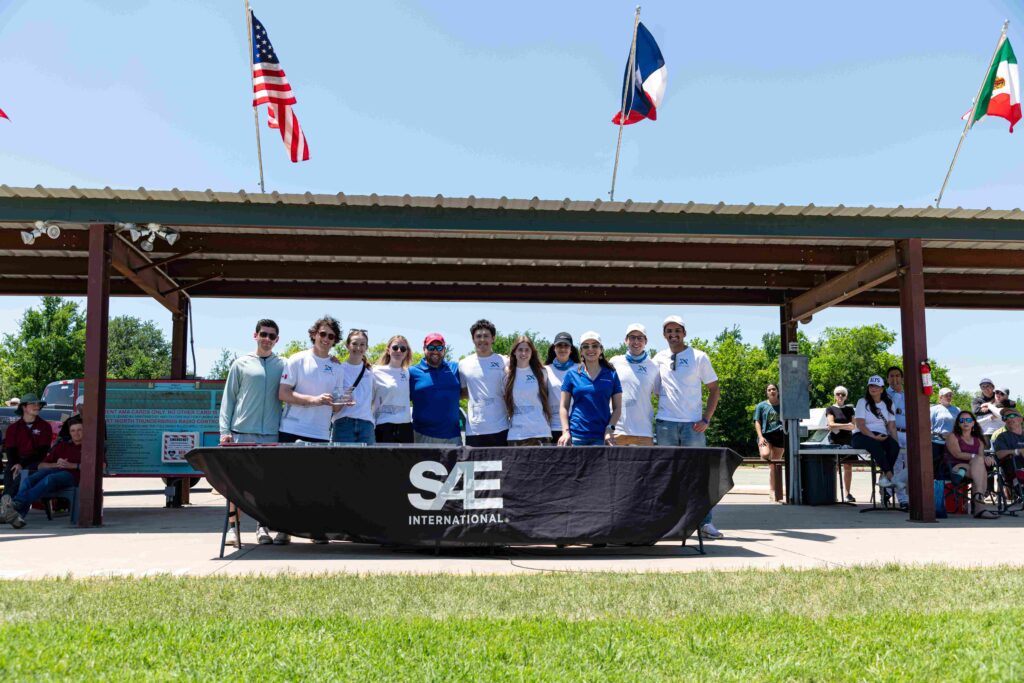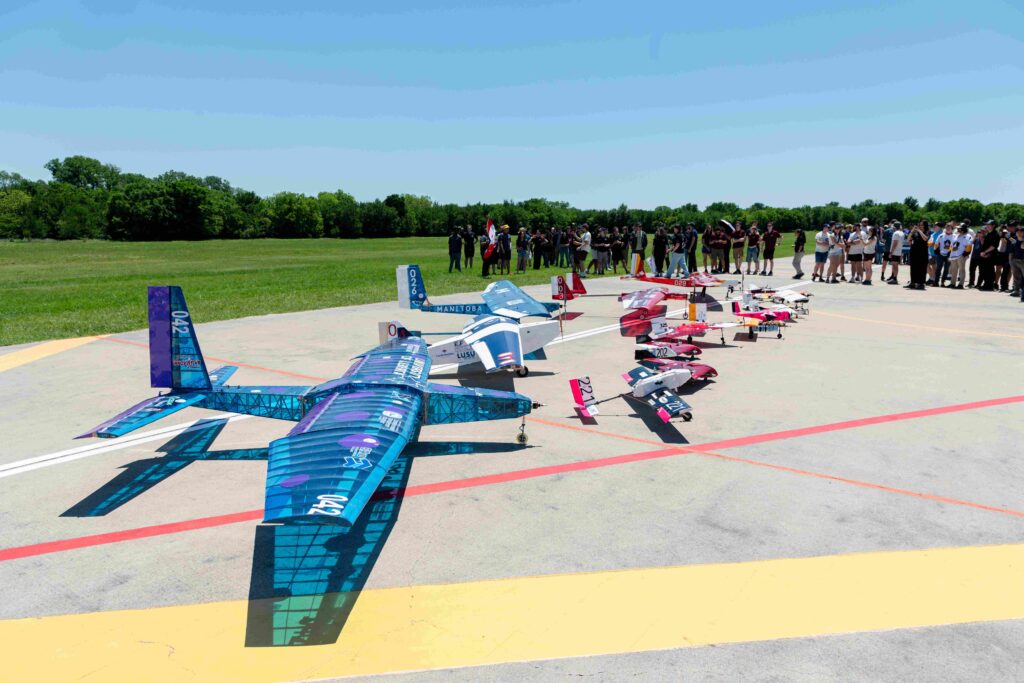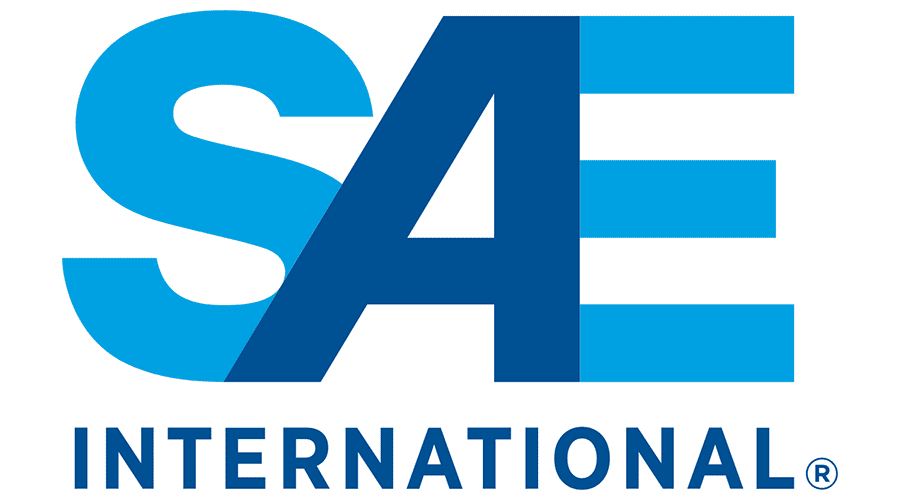Competition
SAE Aero Design is an international competition that challenges university teams to design, build, and fly a radio-controlled aircraft, mirroring the full engineering process from concept to execution. Since 1986, it has served as a real-world platform for students to apply their skills in aerodynamics, manufacturing, systems integration, and project management.
The competition is divided into three classes: Micro, Regular, and Advanced. UAlberta Aero Design has steadily worked its way through each level: competing in Micro Class in 2023–2024, Regular Class in 2024–2025, and now taking on the Advanced Class for the 2025–2026 season.
In the most recent season, Advanced Class introduced a mission centered around autonomous airborne package delivery. Teams were challenged to complete a series of flight segments including takeoff, navigation, payload drop, and retrieval, each reflecting real-world logistics and control challenges. While the upcoming ruleset has yet to be released, we expect a continued emphasis on autonomy, system reliability, and multidisciplinary design.
ADVANCED CLASS
2025/26: The Next Chapter
For the 2025–2026 season, UAlberta Aero Design is stepping up to the Advanced Class, marking an exciting evolution for the team. This decision reflects our desire to leverage the unique blend of software and electrical expertise we have this year, adding new dimensions to our design beyond aerodynamics and manufacturing.
While the aircraft is still in the early design phase, we’re eager to tackle the challenges of autonomy, real-time control, and system integration that define this next-level competition. It’s a bold step that pushes us to expand our skills and innovate at the intersection of hardware and software.
Stay tuned as we chart this new course as we combine engineering disciplines to push our ideas beyond the runway.
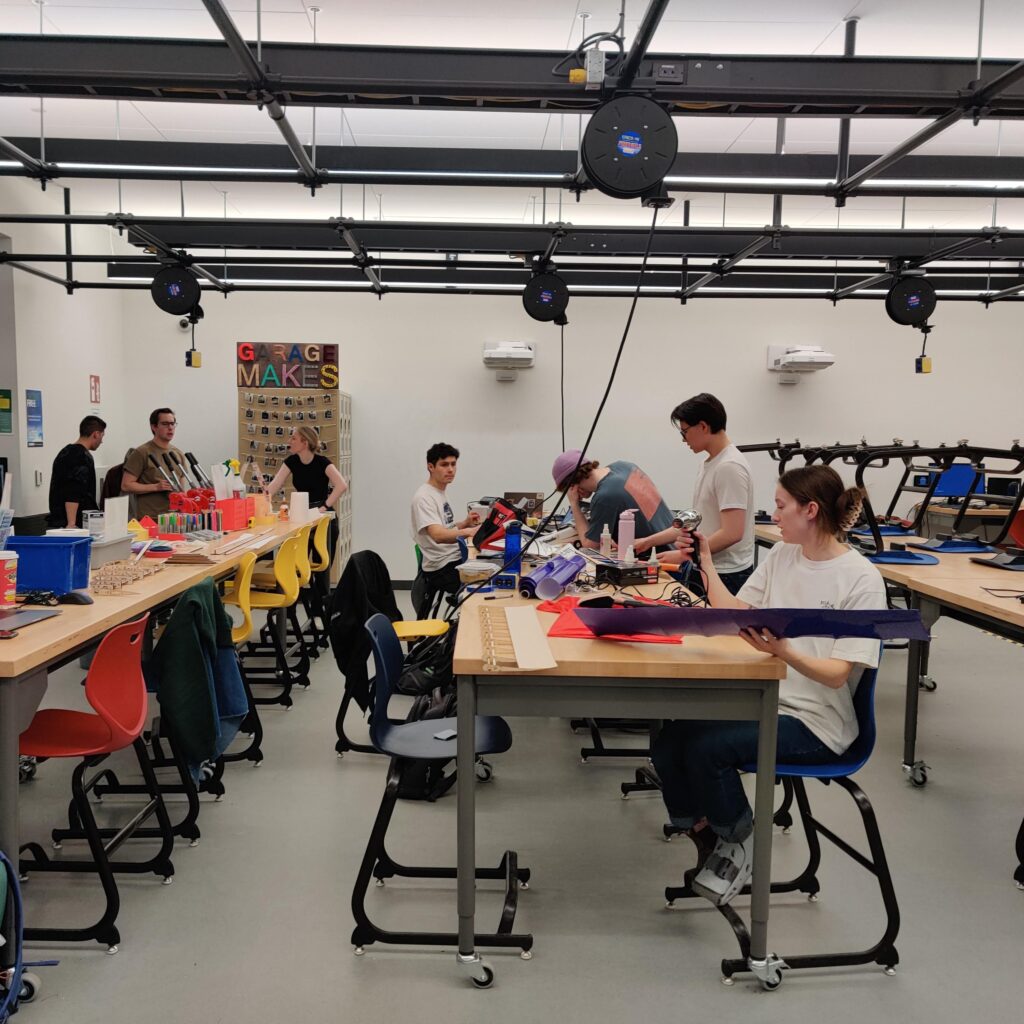
REGULAR CLASS
2024/25: Sulley
The 2024–2025 season saw the launch of Sulley, our Regular Class aircraft designed to optimize a large wingspan and maximize payload capacity. Sulley was engineered for efficient flight and heavy lifting.
A major design challenge was the competition’s requirement that every section of the aircraft be separable into pieces no longer than 48 inches, with wing tips needing to be attached on the runway. This constraint demanded innovative engineering to ensure structural integrity without compromising performance.
Key Specs:
- Wingspan: 15 feet
- Tip-to-Tail Length: 9 feet
- Mean Aerodynamic Chord: 26.3 inches
- Aspect Ratio: 7.12
- Maximum Static Thrust: 42.5 newtons
- Empty Weight: 22.9 pounds
- Estimated Payload: 26.6 pounds
Sulley placed 16th out of 37 teams at SAE Aero Design East and earned 2nd place in the technical presentation, highlighting the team’s technical skill and effective communication.
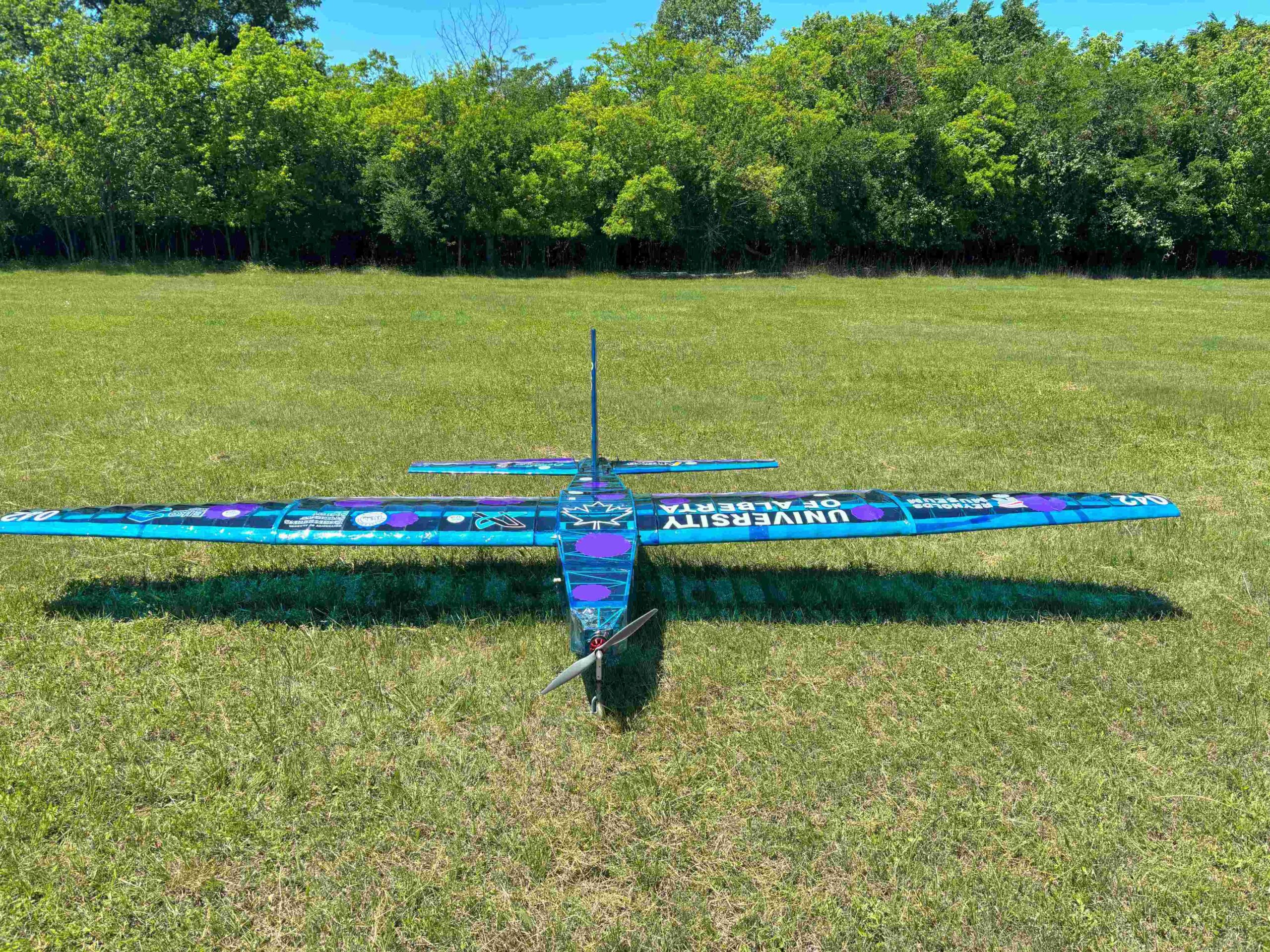
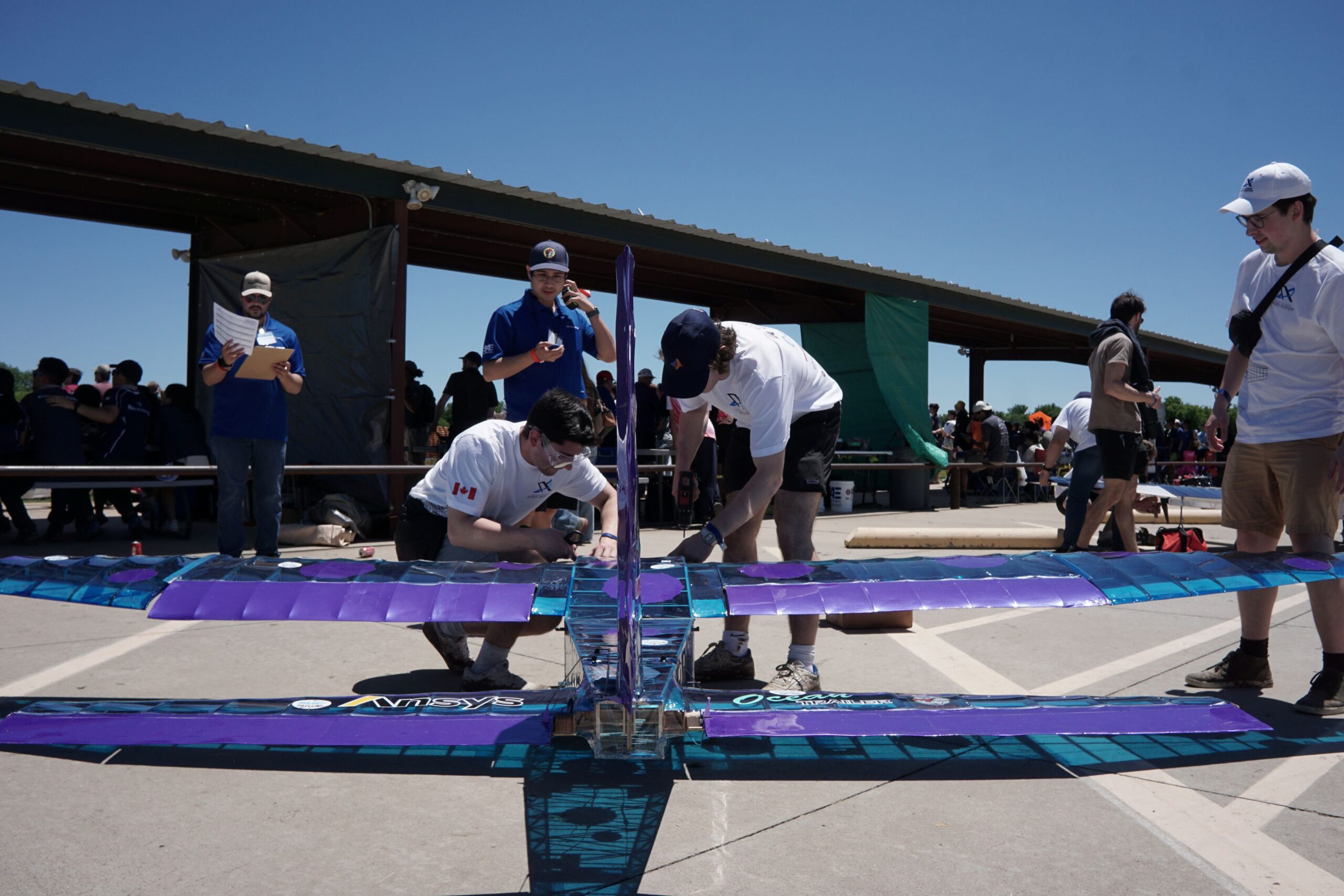
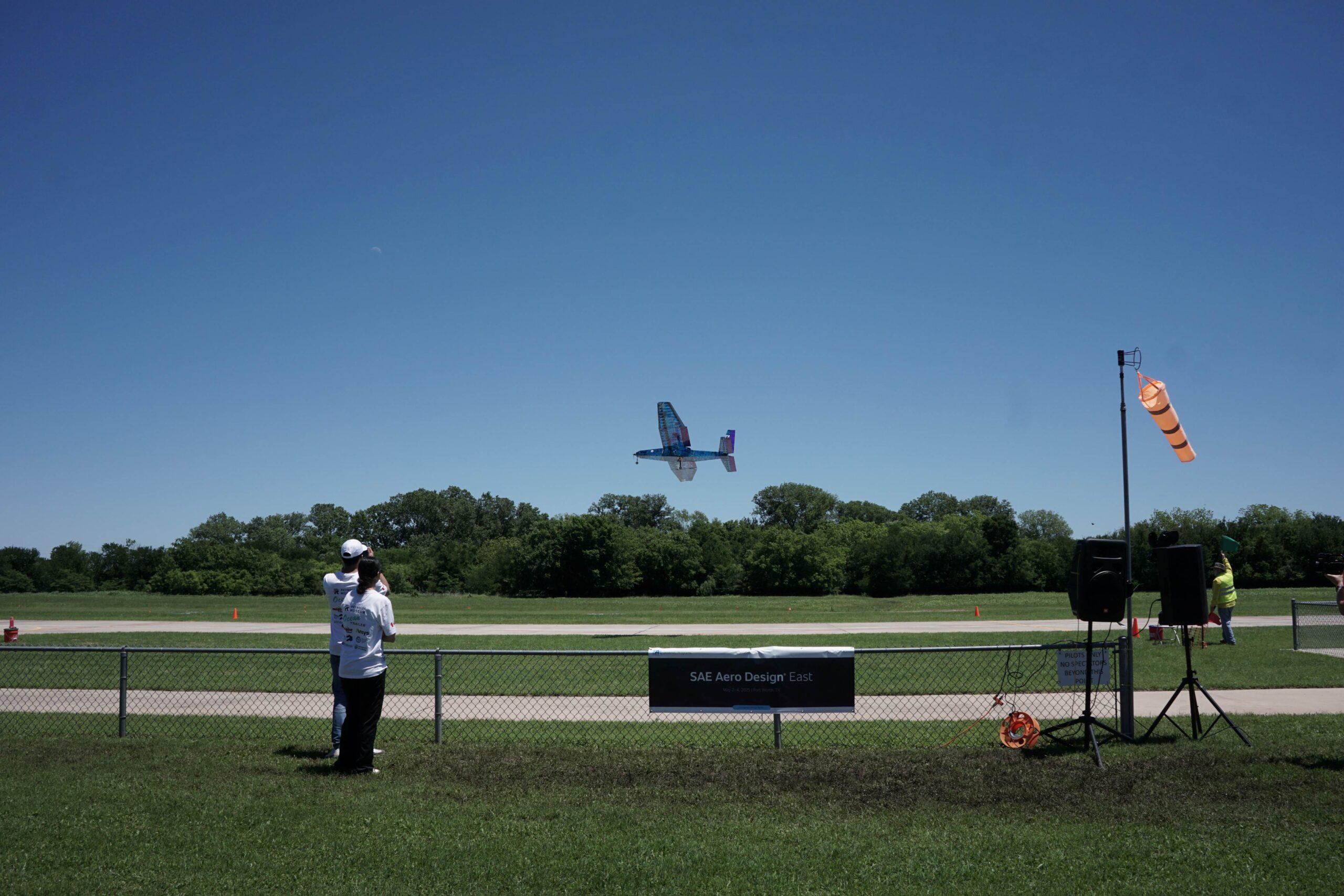
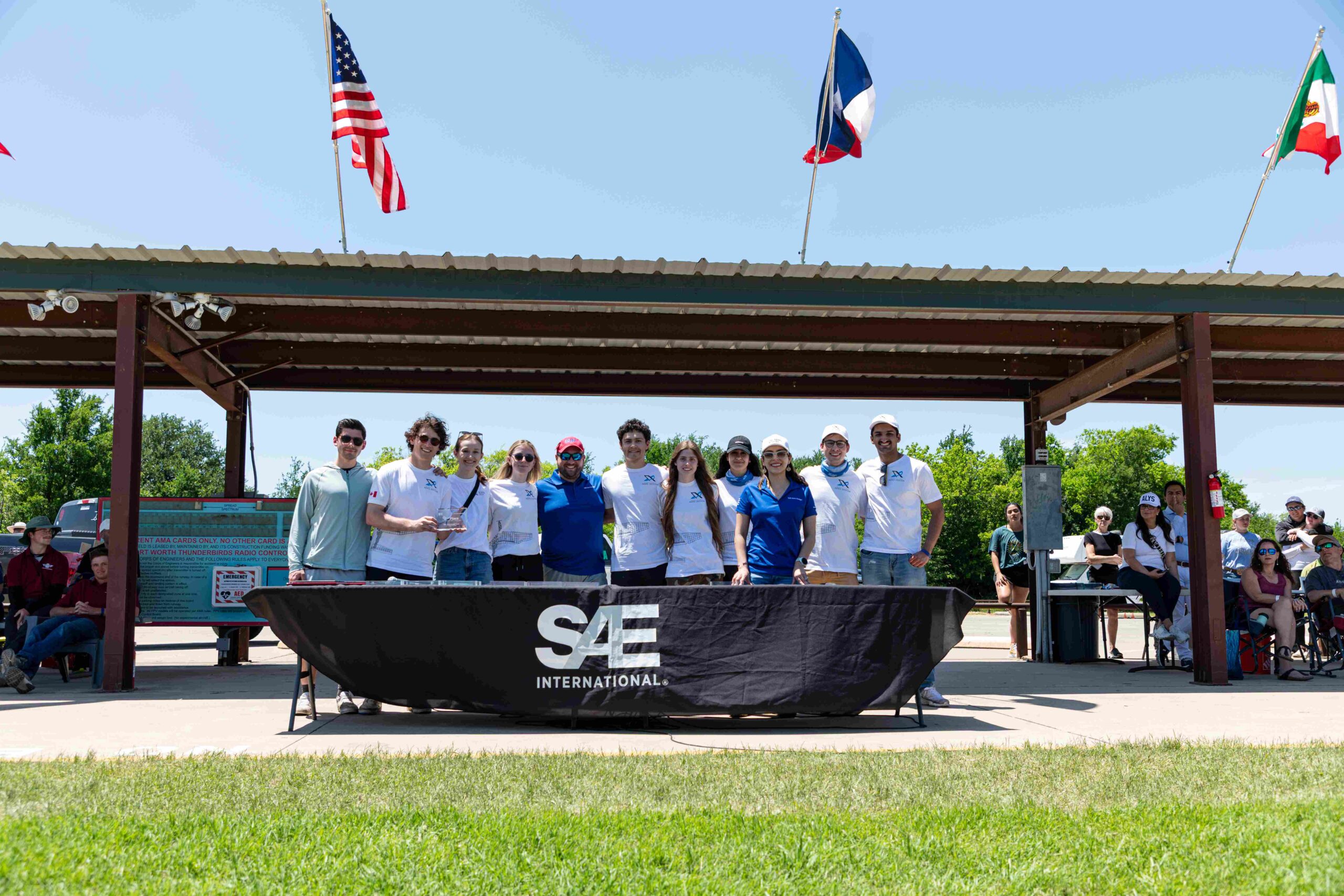
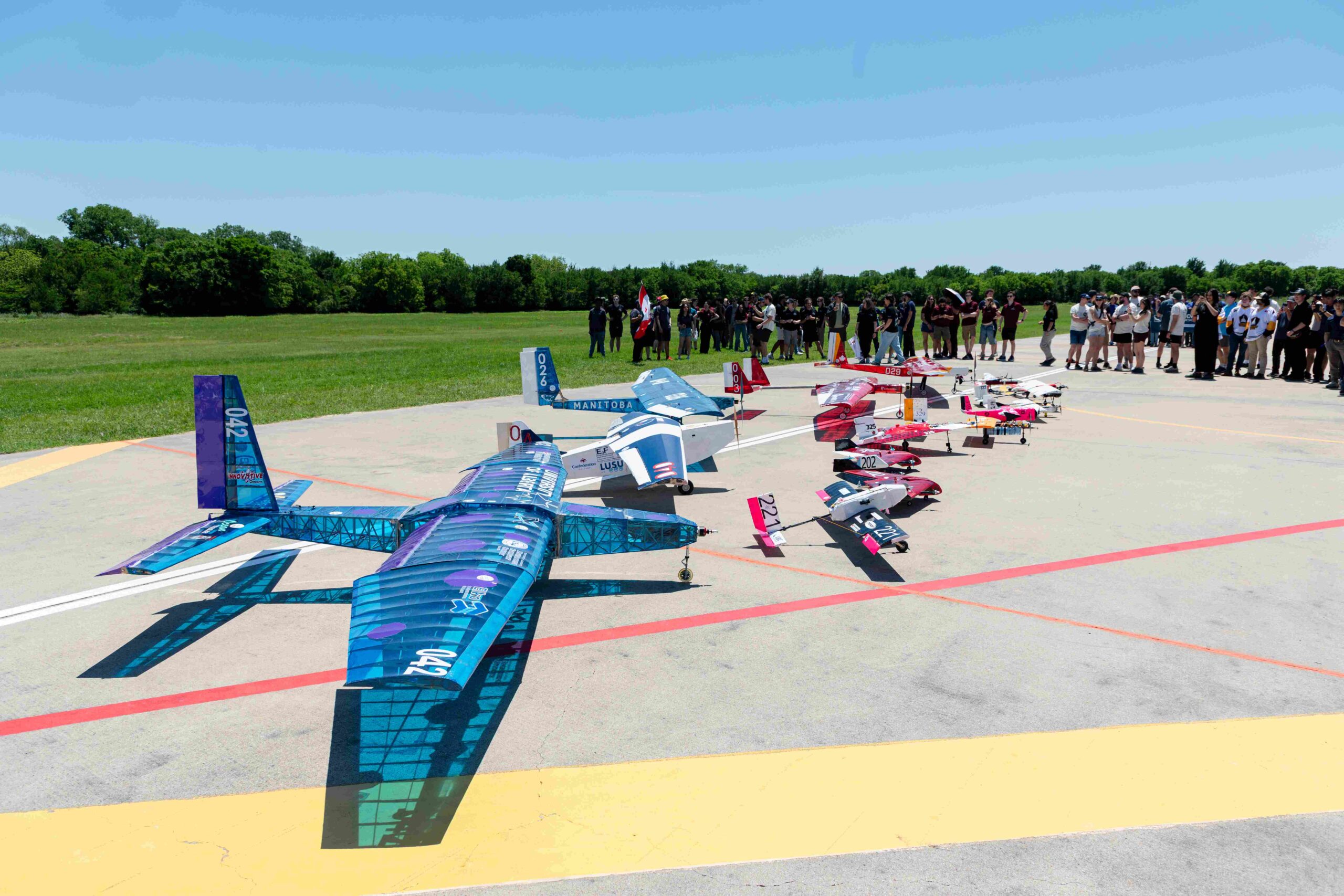

MICRO CLASS
2024
As part of a long tradition of competition, the 2023–2024 season marked a return to Micro Class with Perry, a compact, mission-optimized aircraft designed for maximum efficiency within strict wingspan constraints. A standout feature of Perry was its ability to carry a liquid payload, a significant design challenge that required careful attention to weight distribution and flight stability.
Key Specs
- Wingspan: 48 inches
- Tip-to-Tail Length: 52.4 inches
- Mean Aerodynamic Chord: 12 inches
- Aspect Ratio: 4
- Maximum Static Thrust: 4.7 pounds
Perry placed 3rd overall out of 17 teams at SAE Aero Design East and secured 2nd place in the written design report, making it one of our most successful entries in recent seasons and a strong example of our team’s capability.
